

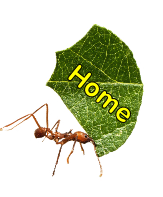
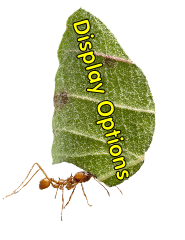
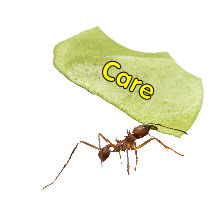
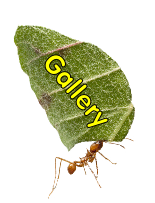
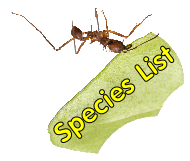
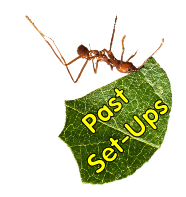
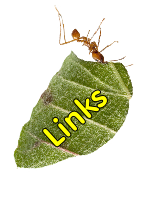
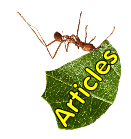
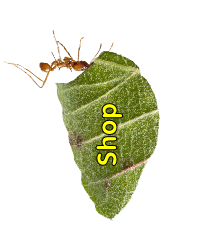
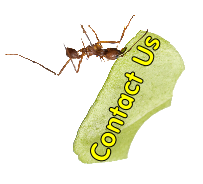
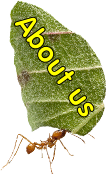

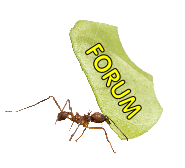

It can be daunting when faced with the task of keeping a colony of leaf cutting ants alive and healthy. For first time keepers, achieving this and getting them to grow and thrive can be a challenge. On this page I will give you the information that will make this much easier. I will try to make the information relevant to looking after a public display colonyand cover the requirements, daily, weekly etc that will ensure the ants are always in good condition and foraging as you would want them to.


Your new colony will almost certainly arrive in a similar container to the one shown in the picture above. This will generally be a colony which has been grown on for some time and will be around 18 months to 2 years old (the time from the mating flight to the point when you receive the ants).
If you are housing the ants in the display tank yourself then dont take them out of the box. Remove the seal over the entrance hole and place the entire box into your display. If there is soil in the display make a hole and sit the box in the hole deep enough that you are able to put a thin layer of substrate over the top of it, to darken it down and give some security to the ants.
During the first 2 weeks or so I normally advise that you feed the ants right beside their nest. The reason for this is so that the ants can spend the majority of their time reorganising their new chambers and tunnels and moving fungus and brood around. If they have to walk a distance along your display to the feeding area at this stage you will find that they either will not do so (and as a result the fungus will starve) or they will make the journey and everything will slow down in terms of establishing the nest.
After 2 weeks there will be a network of tunnels all over the nest enclosure (assuming you have a soil based system) and the ants will be ready to venture out onto the walkway.
Initially there will be relatively low activity. These days we are able to raise colonies to sizes where the activity is good from the start but perhaps, if your nest and feeding station are quite far apart you will find only a few ants make it to the leaves for the first few weeks. I always say we get two complaints from clients after we set up a colony of leaf cutters. The first one is always “theres not as much activity as we hoped”
which normally happens at the beginning of the story. After a while, when numbers start to build up and
then continue to build, the second complaint we will get is usually “what on earth am I going to do with all these f*£$^%& ants!!”
There are basically two parameters that are important to ensure the health of your colony of leaf cutters.
1. Temperature. Keep the nest temperature at between 23C and 26C. Leaf cutters, in the wild, are accustomed to an extremely stable temperature which varies, underground , by around 1C over the entire year. The important thing here, however, is that you measure the temperature where the fungus is. Many people measure temperature in the enclosure and this is never accutrate. You will need a thermometer with a probe which you can position inside the nest. This is the only accurate way to measure the temperature of the ants.
2. Humidity. The humidity of your nest is critical to the health of the colony. You are looking to get the relative humidity as close to 100% as you can. Many sources will tell you that anything over 80% will be fine. This is not the case. Also you must measure this humidity directly where the fungus is located. A distance of a few cm’s can throw the humidity reading accuracy off by manypercent. Bear in mind that any cold surface acts like a dehumidifier and converts airborne water vapour back into liquid water. This means that the front viewing glass of your exhibit, which is normally the coldest part of your display, will likely become covered in condensation which will obscure viewing. Do not be tempted to drop the humidity level in order to prevent this happening. There are many ways to clear condensation from the glass including blowing air at it or heating it with a small spot light.


Once your temp and humidity are correct you are pretty much set to go. Check out the forum for suitable food plants and spray the surface of the nest (if you have a soil based setup) daily. And remember to keep in touch with us as often as you can with observations and questions, especially if you have not kept leaf cutters before. We can advise and help spot problems early on. Once you have had the colony going for a few weeks you will know what to look for.